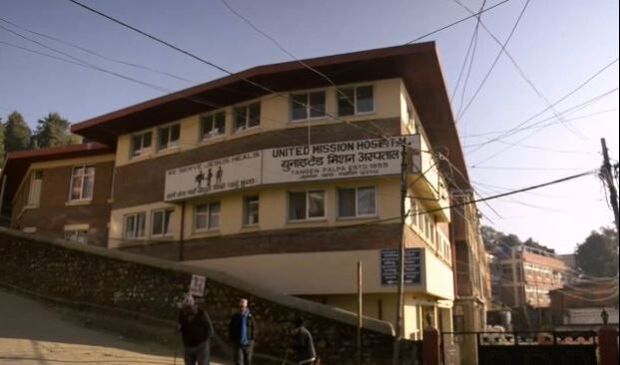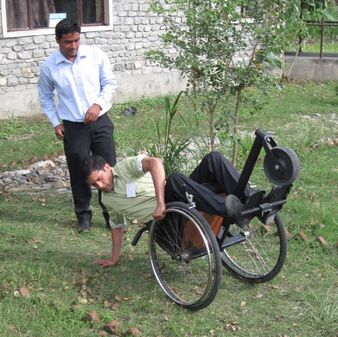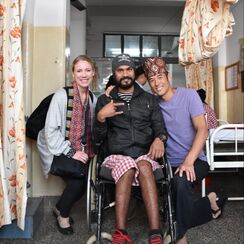"Most of the people who live in the countryside do not have access to rehabilitation...so if something happens either God cures them, or they are left on their own"
- Dr. Niranjan Sharma
- Dr. Niranjan Sharma
Little Access to a Much Needed Service
For people living with disabilities, Nepal is one of the most under-served countries in the world. Nepal has a population smaller than Canada by approximately 10 million, according to the 2021 Census, however for people living with chronic conditions such as stroke, acquired brain injury and spinal cord injury, medical specialists are few, and rehabilitation services even fewer (1). While services to support these populations are limited, access to rehab is even more challenging for those who live in the rural and mountainous regions of the country (1).
Changing Landscape to Disability
|
From 1990 to 2017, there has been a shift in the leading cause of illness and disability in Nepal, from communicable to non-communicable diseases (from bacterial and viral infections to traumatic injury from falls and road-traffic accidents (2). This change calls for even more rehabilitation services to support patients in their recovery, and reduce the impact of disability on well-being and overall quality of life.
|
No Government-Funded Healthcare Facilities
There are currently no government-funded rehabilitation hospitals in Nepal. While some of the acute hospitals offer inpatient physiotherapy services, there are no dedicated rehabilitation units embedded within hospitals (1), and further no government-funded medical rehabilitation specialists, also known as physiatrists. International and local NGOs (non-governmental organizations) have played vital roles in Nepal by supporting dedicated rehabilitation institutions (1). Few such hospitals provide almost all of the inpatient rehabilitation services for the country.
Unmet rehabilitation needs can delay discharge, limit activities, restrict participation, cause deterioration in health, increase dependency on others for assistance, and decrease quality of life.
WHO World Report on Disability (2011)
WHO World Report on Disability (2011)
Access to Services
83% percent of people living with disabilities in Nepal do not have access to rehabilitation services (2) The 2016 Nepal Demographic and Health Survey further indicates that 11% of households have to travel over one hour to reach the nearest government health facility - a statistic that disproportionately affects Nepalis living in the rural, mountainous regions of the country, where overall socioeconomic status is also lower than those living in more urban settings (1).
Clinical Education
|
Along with limited rehab services, there are additionally few training programs in Nepal to develop clinical expertise in rehabilitation medicine. Physiatry, Occupational Therapy, and Prosthetics & Orthotics are all currently in need of established Nepali education programs. There are bachelor’s programs for physiotherapy and speech-language pathology, however, clinical providers must go abroad if they are looking to pursue higher or specialized education (1).
|
Technology
The availability of assistive devices, including mobility aids, is also inadequate. Most devices must be imported, with an over-reliance on donations from charities and other external organizations. There are currently no local manufacturers of assistive devices in Nepal (1).
- Dhakal, R., & Groves, C. C. (2019). Rehabilitation in Nepal. Physical Medicine and Rehabilitation Clinics of North America, 30, 787-794. doi:https://doi.org/10.1016/j.pmr.2019.07.004
- USAID. (n.d.). Nepal Fact Sheet; Physical Rehabilitation Activity. Retrieved from United States Agency for International Development
More from NepalAbility
NepalAbility is a registered charity in Canada.
Charity Registration Number 706073087 RR0001
|
|
CONTACT INFO
Email: [email protected] Mailing Address: NepalAbility PO Box 91037 Bayview Village Willowdale, ON M2K 2Y6 |











